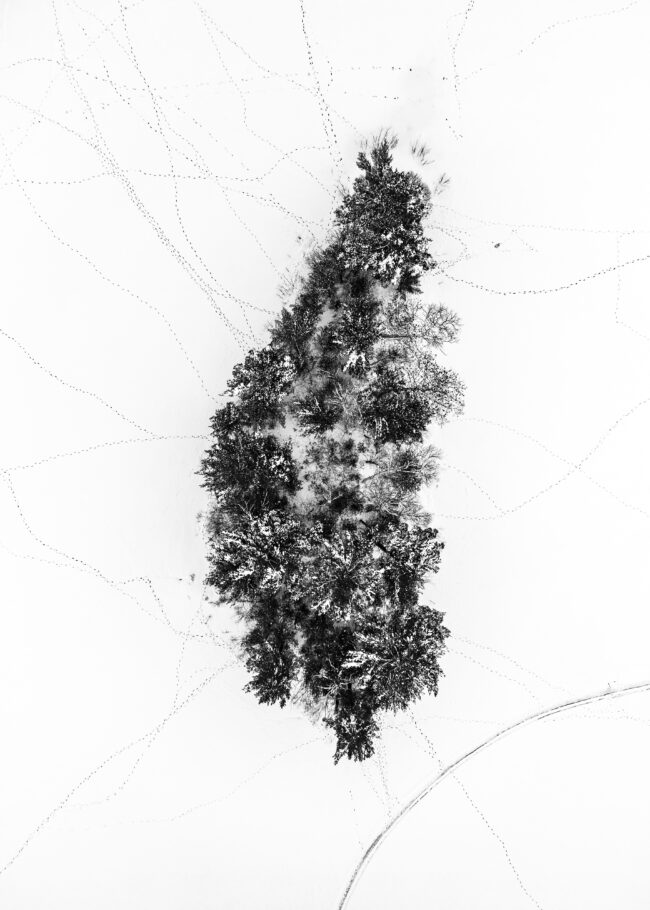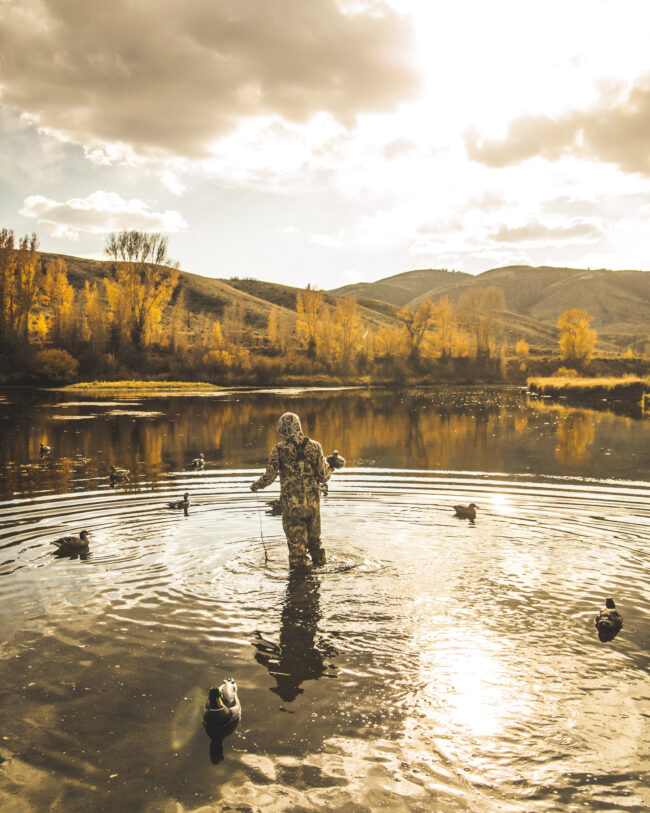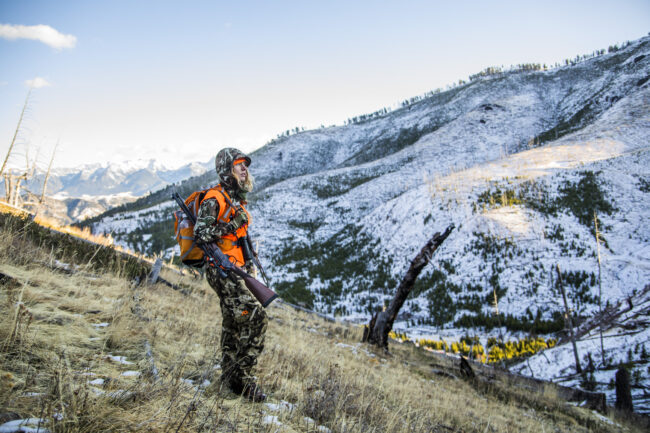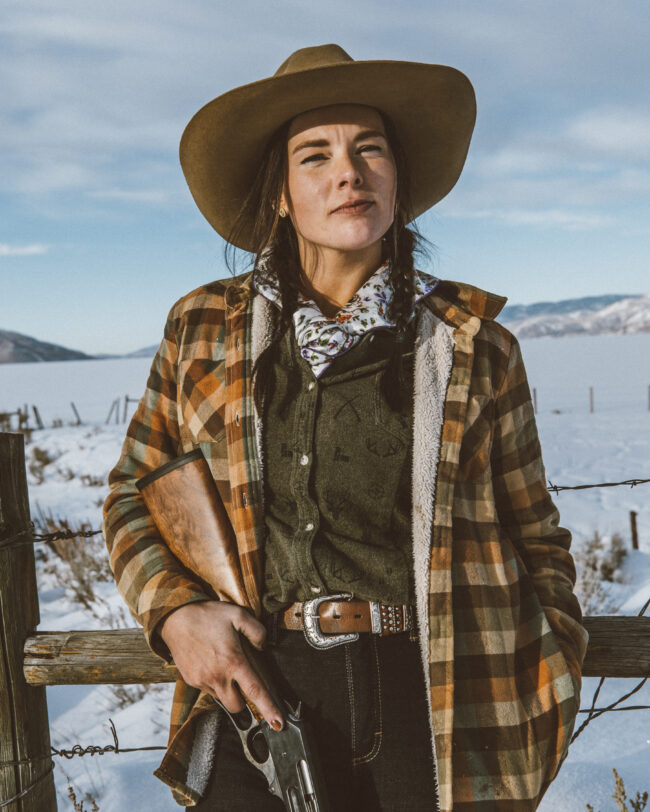 Chris Dowell
Chris Dowell
Heidi: What circumstances led up to photographing that stand of trees? It’s much more abstract than most of your work.
Chris: After spending most of the winter cooped up in my tiny apartment in Chicago, I was determined to escape for a week to our family cabin in the Northwoods of Wisconsin. I wanted to catch the last few days of small game season and to see our property in the winter for the first time. It ended up being an unsuccessful hunting trip due to the few feet of snow from a recent storm. I decided to relax, take in the harsh beauty of winter, and make some photographs. The thing that stood out the most was the view of the island from the sky, our family refers to it as “Blueberry Island”, but it has no official name. Usually cut off from the rest of the woods in the warmer months, it was now re-connected to the woods and the animals that surround it. It was such an incredible reminder of the ebb and flow of the seasons; something so inaccessible in perfect weather becomes shelter and fresh forage in a bitter winter.
Tell us about the tracks in the snow.
I always love finding tracks, especially in the winter when you can follow them for miles or until you bump into whoever has been making them. They are like a journal of that animal’s day; they stopped here for a bite, got spooked by something, bedded down for a nap. I wish I could identify all of the tracks going to and from the island. I know there are plenty of whitetail deer, coyotes, and even a pack of wolves. I love how the snowmobile mixed with the tracks, a visual reminder of how intertwined man and nature are.
Why black and white?
When I shot this image it was a fairly gloomy overcast. Any shades of brown in the trees that might of come through on a sunny day were completely washed out and grey. I decided to commit to the muted palette and let the beauty of the tracks and abstract patterns they made stand out. This image was a Finalist for Modern Huntsman‘s first photo contest.
What projects have you been photographing?
Right before Covid hit, I started to look into different types of sustainable agriculture and hunting. When the pandemic came down in full force and we watched the grocery store shelves empty, I decided to start photographing farmers in my area. I wanted to understand what the local agriculture system looks like and what it means to provide for yourself. I found it fascinating that a network of small farms can be much more stable than these large corporate producers. I started visiting local farms and started to learn to hunt in earnest. It is so fulfilling to not only learn about their stories but to get to see them in action as well. Each farm I visit becomes a short photo story of their land, crops, or livestock aided by portraits. These are the stories that need to be told in order to help us appreciate where our food comes from and what it takes to get it. My goal is that these small visual histories will help reach audiences that might not normally give where their meat and veggies come from a second thought.
How is your panic garden doing a year later?
Flourishing! My Fiance and I have since moved away but my dad has expanded it, and it is now a small community garden with some of the other families in the neighborhood planting and tending to it.
How has wildland firefighting influenced your photography?
It helped solidify a shift in my work and propel the next stage of my career. In school, I was shooting a lot of fashion and surf. But it wasn’t until I started working on documentary-style photography later in my college career that I started to know where my passion and purpose would be in photography. When I first arrived in Montana, I really wasn’t sure which professional direction would help me fulfill my goal of being a documentary photographer. Having a life-changing opportunity to fight wildfires in Montana gave me some space from my photography work and showed me the power our world has to destroy and create despite any plans we might have. It taught me how capable people are when truly pushed, and how important training and preparedness are, no matter what you are doing. I wanted to bring these lessons into my work and what I chose to photograph.








